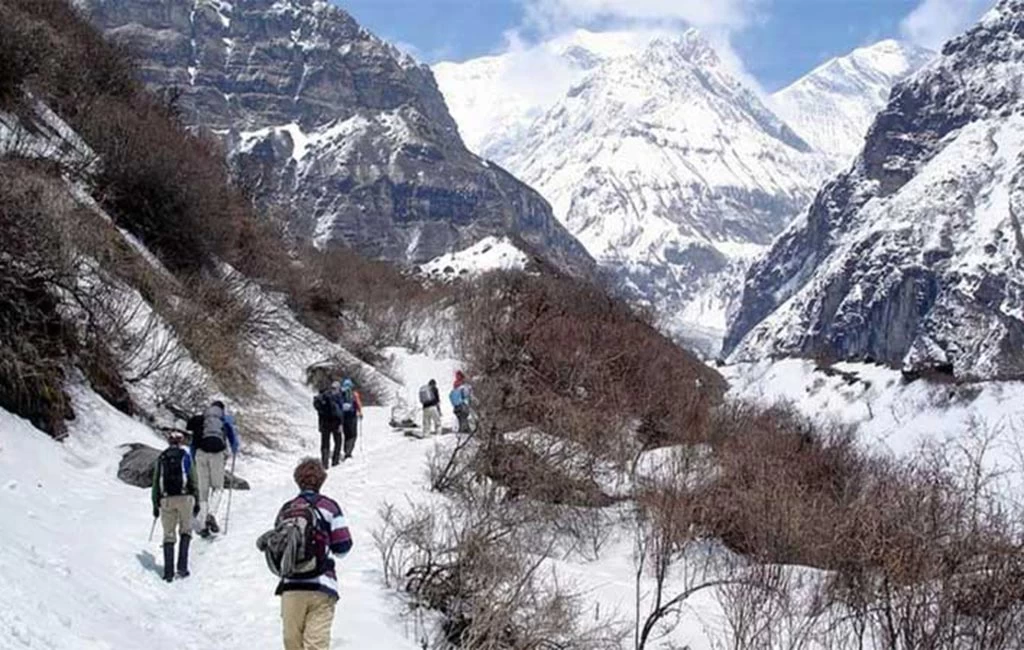The Druk Path Trek is one of Bhutan’s most popular and accessible trekking routes, offering a perfect balance of natural beauty, cultural encounters, and spiritual discovery. Stretching between the towns of Paro and Thimphu, the trek typically takes 5 to 6 days and is ideal for moderately fit travelers who want to experience Bhutan’s landscapes away from roads and crowds. With stunning mountain views, ancient monasteries, and high-altitude lakes, the Druk Path is an unforgettable journey through Bhutan’s soul.
Geography
The Druk Path winds through the mountains between Paro and Thimphu, following a scenic ridgeline that stays between 2,400 and 4,200 meters in elevation. The trail passes through alpine forests, open meadows, and crystal-clear lakes such as Jimilang Tsho and Simkotra Tsho, surrounded by rhododendron and juniper trees. On clear days, trekkers are rewarded with magnificent views of Mount Jomolhari and other Himalayan peaks.
Along the way, trekkers encounter remote yak herder camps and centuries-old temples, including the cliffside Phajoding Monastery, which overlooks the Thimphu Valley.
While the trail itself is sparsely inhabited, you’ll meet local guides, yak herders, and monks during the trek, offering insight into the lives of Bhutanese mountain communities. Bhutanese people are known for their kindness, humility, and spiritual devotion, especially in the highlands where Buddhism deeply influences daily life.
The climate along the Druk Path varies with altitude and season. Spring (March to May) and autumn (September to November) are the best times to trek. During spring, the forests are alive with blooming rhododendrons, while autumn offers crisp air and clear views. Daytime temperatures are comfortable, but nights can drop below freezing at higher altitudes, especially near the alpine lakes.
Transportation
The trek typically starts in Paro, home to Bhutan’s only international airport. Most travelers arrive here via flights from cities like Bangkok, Delhi, or Kathmandu. After a day or two of acclimatization and sightseeing in Paro (including a visit to the Tiger’s Nest Monastery), the trek begins.
The trek ends near Thimphu, Bhutan’s capital, where your tour vehicle will meet you. All gear, food, and tents are transported by pack animals (usually yaks or horses), and you'll be accompanied by a licensed Bhutanese trekking guide, cook, and support crew. Travel logistics are managed by the tour operator, so you can focus on the experience.
Bhutan operates a unique tourism policy focused on “High Value, Low Impact” travel. All international tourists (except those from India, Bangladesh, and the Maldives) must book their trip through a licensed Bhutanese tour operator. This includes all treks.
A visa is required and is issued only after the tour is booked and the Sustainable Development Fee (SDF) is paid. The SDF helps fund free healthcare, education, and conservation in Bhutan.
No special trekking permit is required for the Druk Path, but your operator will handle all necessary approvals. Indian, Bangladeshi, and Maldivian travelers must obtain a permit, especially for trekking, but this is arranged through local agencies.
Why Choose the Bhutan Druk Path Trek?
The Druk Path Trek is the perfect choice for travelers seeking a short yet rewarding Himalayan adventure. It’s one of Bhutan’s oldest and most scenic routes, historically used to connect Paro and Thimphu. With no extreme altitudes or technical difficulty, it’s ideal for both experienced hikers and adventurous beginners.
You’ll sleep under the stars near glacial lakes, walk centuries-old trails, and end your trek in the modern capital—combining Bhutan’s wilderness with its vibrant culture. Few treks in the world offer such diversity in such a short distance.
If you’re looking for an authentic Himalayan experience rich in nature, history, and heart—the Druk Path Trek is your path to Bhutan’s soul.


Comments (0)